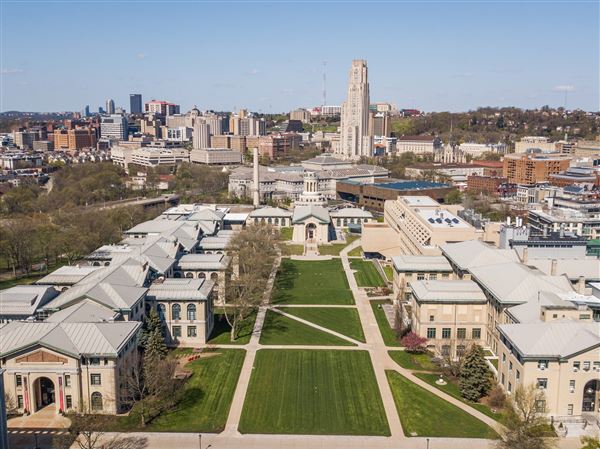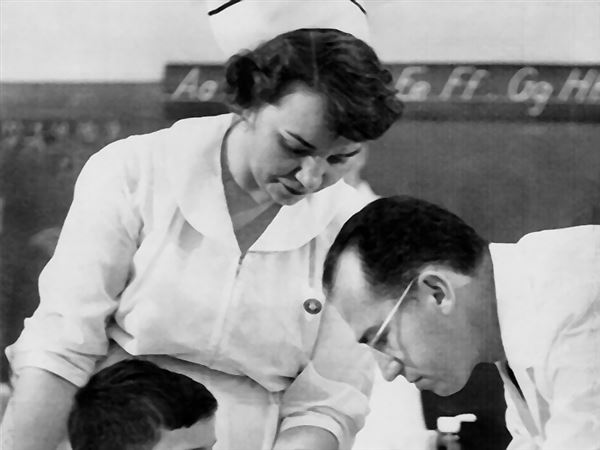Great economic distress can bring about great migration.
The grandsons and granddaughters of Southern slaves moved north by the millions in the early 1900s, looking for work. The Dust Bowl and the Great Depression dispersed hundreds of thousands out of the Plains and into the cities, job-searching in places like California, the land of gold and dewy orchards. The disintegration -- and de-industrialization -- of the Rust Belt dealt countless mill workers out of cities like Pittsburgh, Buffalo and Youngstown and into Phoenix, Charlotte and Tampa.
A meteorite has struck the world's economy, and America stands on the crater's rim. What happens if we fall in? What happens if another financial house dissolves and one of the automakers goes under? Is another mass dislocation a possibility?
And will any of those free-falling souls land in Pittsburgh?
•
We read the news last month that Pittsburgh's annual population loss is slowing. Of course, we've been reading that for the last 10 years, off and on. And of course, that headline is tempered by the news that Pittsburgh's many years of "slow and steady" job growth -- which we hoped had insulated us from economic cataclysm and a boom-bust housing market cycle -- have been nearly wiped out after just a couple of poor months.
The region has lost almost 20,000 jobs since February 2008, says local analyst Harold D. Miller, president of Future Strategies LLC. For Pittsburgh, that was almost a decade's worth of growth.
But after six decades, maybe we've finally bottomed out, and just in the nick of time. If there's one thing we've learned from this column, it's that so many ex-Pittsburghers -- those who left three years ago, and those who left 30 years ago -- yearn to come home, or at least pay lip service to the idea.
This may be your best chance yet.
•
When Willis Haviland Carrier (he of Carrier Corp.) came up with the design for the modern air conditioner 107 years ago, it's doubtful he'd considered the socioeconomic ramifications his invention might have.
But as Harvard economist Edward Glaeser wrote after your Pittsburgh Steelers bested the Arizona Cardinals in Super Bowl XLIII, "there is no variable that predicts urban population growth in the 20th century better than January temperature." Places with warm winters have been growing, especially since the 1950s, when air conditioning made those places not only pleasant in January, but also tolerable in June, July and August.
Sure, there were other factors behind the Sun Belt's post-World War II growth -- labor is cheaper because unions aren't as powerful there, meaning manufacturing and millwork eventually migrated south. A lack of developed suburbs meant lots of cheap land on the outskirts of Southern cities, hastening sprawl. And the South's proximity to Mexico and Cuba means millions of immigrants end up in Arizona, Florida and Texas.
But we also can't pretend that this isn't about the weather, to at least some degree. Arizona was scrub grass and cacti before air conditioning. Water was, and still is, a scarce commodity. "Phoenix has few innate natural advantages, other than sunshine," Dr. Glaeser wrote in Economix, a blog on NYTimes.com. "Instead, it has mile after mile of desert, which it is covering with thousands of attractive, affordable homes."
Hey, Pittsburgh has attractive and affordable homes, too. So it's gotta be the sunshine, right? Can the Pittsburgh Diaspora's Sun Belt Auxiliary ever be convinced to turn in its flip-flops and halter tops for galoshes and wool coats?
"The recession could accelerate the out-migration from California. ... Native-born Americans are actually leaving California," said Ohio University professor Richard Vedder, who researches economics and its relationship to American migration. "The last year or two, there's some indication that it's happening" in Florida, too. (The states still register net growth, but that's a product of the immigrant underclass.)
That doesn't mean those leaving the Sun Belt will end up in Pittsburgh, obviously. But perhaps we can reverse the flow of regional outmigration. For every worker we've lost to sexy spots like Austin or North Carolina over the last 20 years, we've lost two to Washington, D.C., or Philadelphia. We lose just as many workers to Columbus as we do to Atlanta. Not everybody leaves for sunnier climes; many just left for sunnier job prospects, and the closer, the better.
And in many of these cities -- this year, anyway -- unemployment is higher than it is in Pittsburgh, and homes are more expensive than they are in Pittsburgh. As job prospects shrink over the next nine months, the intra-regional churn figures to grow. And maybe Pittsburgh has a chance at winning, even if, in the end, it's a zero-sum game for the Rust Belt at large.
Maybe we'll never get the droves of grads and job-seekers to leave the warmth of Atlanta for Pittsburgh. But if you can take the sunshine out of the equation, it might be an easier sell. People living in Chicago and Cleveland, after all, already own a winter coat. One less thing to worry about, ya know?
First Published: April 10, 2009, 8:00 a.m.

















